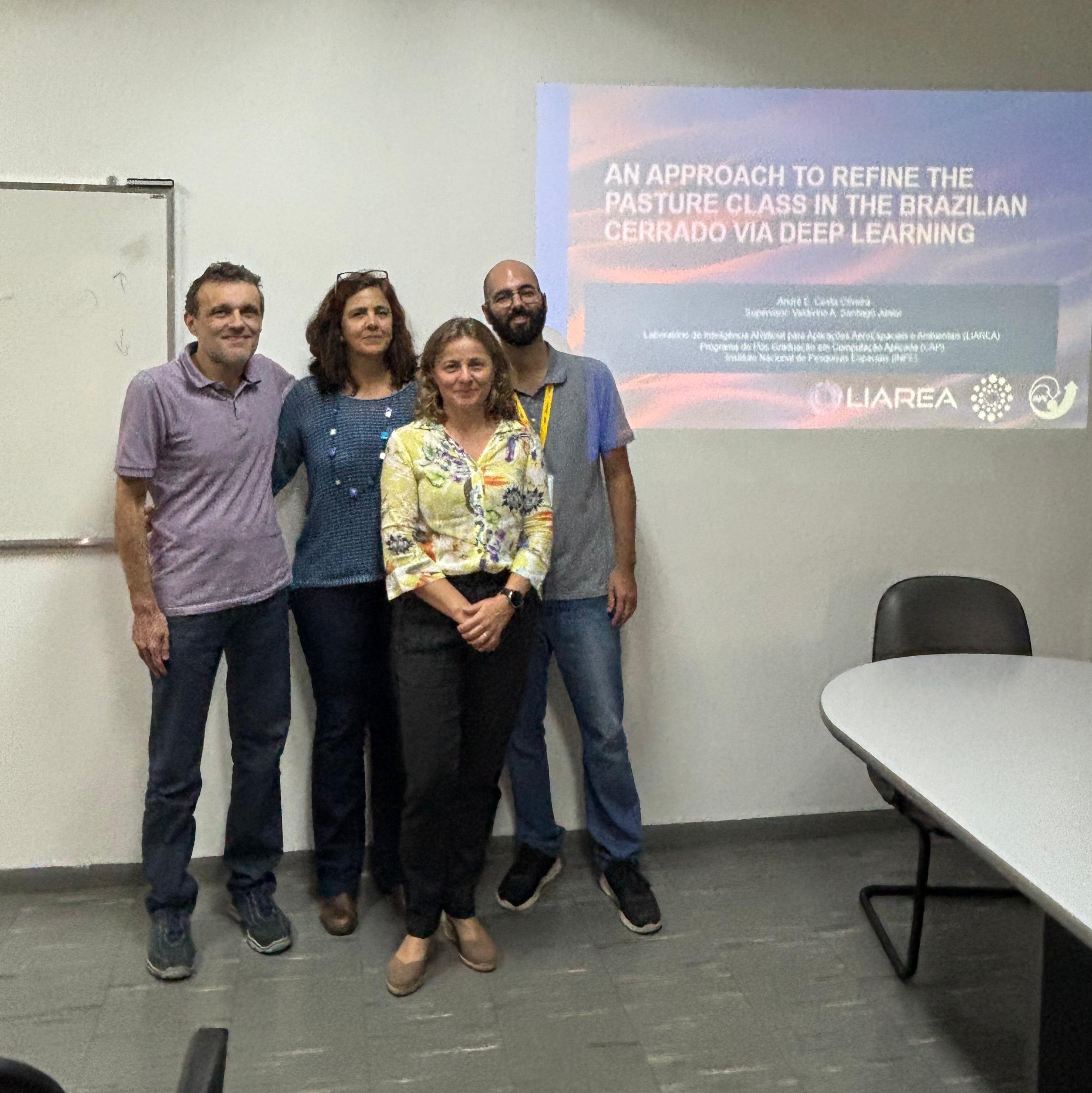André Estevam Costa Oliveira, a graduate student representing INPE, successfully presented his master's proposal titled "Refining Pasture Classification in the Brazilian Cerrado Using Deep Learning and Satellite Image Time Series (SITS)." The presentation addressed the challenges of accurately mapping pasture types in the Brazilian Cerrado, a region with subtle spectral differences and dynamic temporal behavior that complicate classification efforts.
Current mapping initiatives often aggregate distinct phytophysiognomies, such as herbaceous and shrubby/arboreal pastures, into a single class, limiting the ability to assess vegetation regeneration, land degradation, and sustainable land management. To address this gap, the master's dissertation proposes a novel method using deep learning to refine pasture classification through Satellite Image Time Series (SITS). The approach incorporates a 3D Convolutional Neural Network (3D CNN) to extract spatial and temporal patterns from Sentinel-2 imagery.

From left to right: Dr. Valdivino, Dra.Karine, Dra. Maria Isabel and André
As part of the methodology, the feasibility of 3D CNNs was investigated for classifying the thematic classes from the TerraClass - Cerrado project. Experiments focused on three ecologically distinct regions of the Cerrado: Paranaguá, Chapadão do São Francisco, and Depressão Cárstica do São Francisco. Initial results, comparing the U-Net3D model against other models using TerraClass - Cerrado and PlanetScope images, showed that U-Net3D outperformed the others, demonstrating its potential for spatio-temporal semantic segmentation.
The proposed 3D CNN-based approach aims to improve pasture type delineation by capturing complex temporal and structural variations, offering a promising tool for advancing land use and land cover mapping and ecological monitoring in tropical savanna regions like the Brazilian Cerrado.
The defense was supervised by Dra. Karine Reis Ferreira Gomes, Dr. Valdivino de Santiago, and Dra. Maria Isabel Sobral Escada. Their expert evaluation and feedback greatly contributed to the success of the defense.

